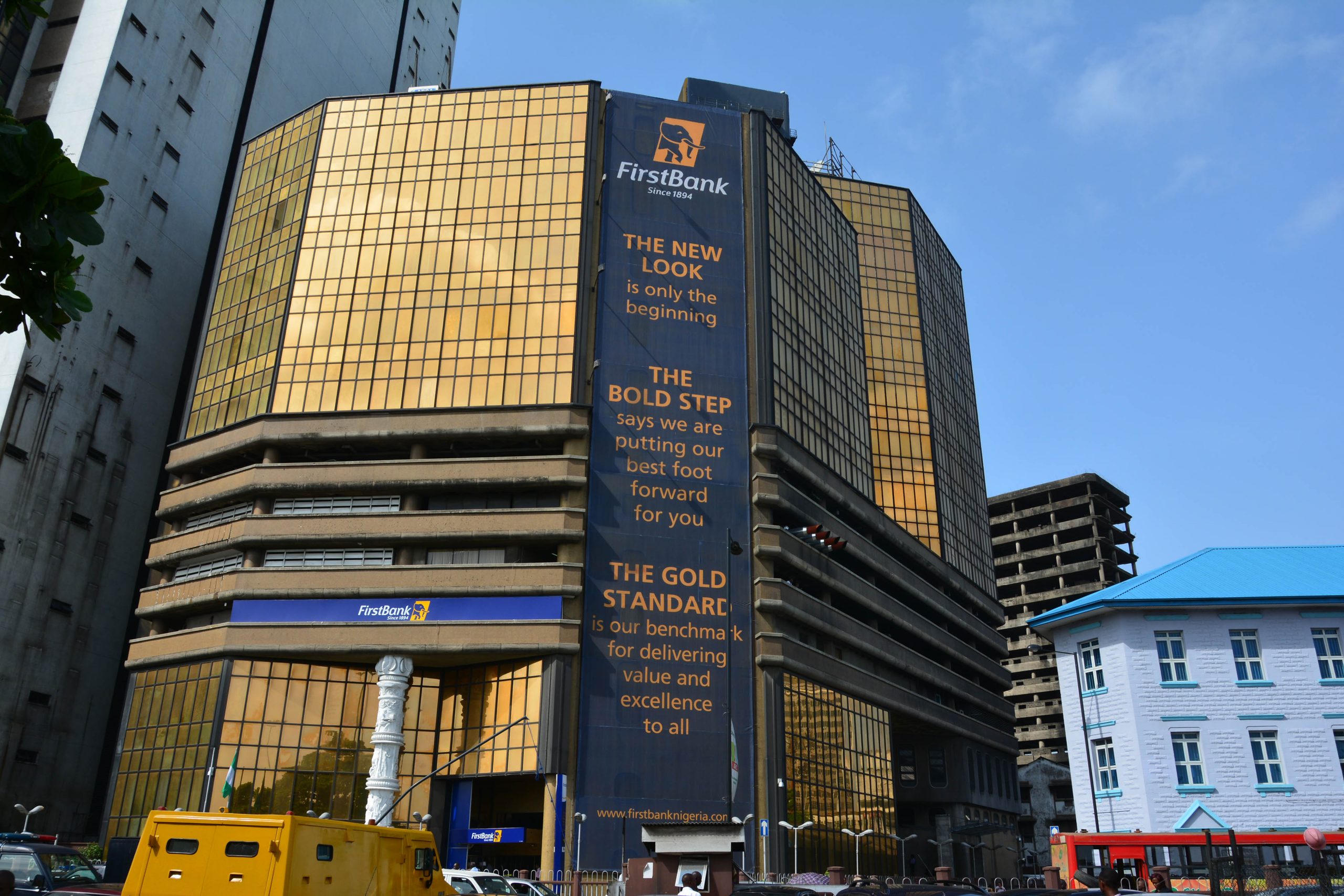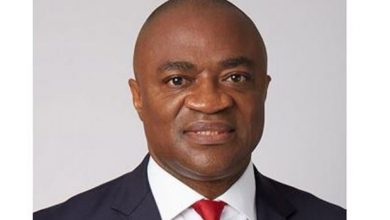Abubakar Suleiman : A MAINTENANCE ‘ENGINEER’ AS BANK CEO ?

Sterling Bank has remained a threshold player since inception , is it destined to be a laggard ?
“Vision is the art of seeing the invisible ” , says – Jonathan Swift .In the corporate world , those who see the invisible are like an architect . Such managers make commitments to particular skill areas far ahead or in advance of the emergence of specific end product markets ; for them less time is spent worrying about how to position the firm in existing competitive space and more time creating fundamentally new competitive space . .But not every manager sees the invisible. Some are like maintenance engineers in the corporate life. For a CEO with a maintenance mindset ,the mission is usually merely to protect the past than creating the future ,take industry structure as a given and seldom to challenge the prevailing conventions. They protect the past and follow others instead rewriting the rules of the game and confronting the orthodoxy
From all indications , the Sterling Bank’s leadership under Suleiman in the last few years belongs to the latter; and its results are clear enough : incremental and slow progress of the bank . No doubt about it , if Sterling Bank must quit its present status of a laggard , it remains unassailable that it needs a paradigm shift ftom its current goal. It must transform the industry , not just the organization .
Sterling Bank has remained on the treadmill with incremental progress since its inception; this less impressive performance, for its investors has been a talking point. .
The current competitive position of Sterling Bank may not be farfetched. The banking environment has witnessed an overwhelming and dramatic change and this requires every player to move in the same direction. But not every leader or manager is usually atuned to the demands of the new dynamics . When changes are glacial or extrapolation of the past , a company could be run by a maintenance engineer and it can maintain its success without any threat to survival. But this not the case any longer ; there is now a paradigm shift in the banking industry. This is where some players get it wrong .
The banking environment has changed dramatically and it needs a leader who can think differently to achieve a turnaround ; when faced with the tides of technological, demographic, and regulatory change and order of magnitude productivity and quality gains made by non-traditional competitors .only an architect- like minded leader can handle the palaver without success being eroded or destroyed . To make a virtue out of imitations as currently being done by the leadership of Sterling Bank is like adapting to the pre-emptive strategies of more imaginative competitors . In a nutshell , although its catching up drive is necessary but will not turn the bank a leader . Though this is important, but a company must be capable of fundamentally reconceiving itself, of regenerating its core strategies and of reinventing its industry. ; it must be capable of getting different. Without this , it will remain a laggard as confirmed by its performance over years .
Its 2021 unaudited first quarter results and full year audited results for 2020 financial year as well its valuation multiples confirmed this view and are pointers to the need for a more visionary leader for its quick turnaround . One issue that must be noted is that its operating margin is not that bad . In the first quarter of 2021 , its operating margin improved from 59.8 % in the last quarter of 2020 to 64.8 % and between 2019 and 2020 58% to 64.5 %
However , a major headache for the management of sterling Bank is its inability to drive down its cost to income ratio . Imagine a bank with an operating income of N20 ,088B which after impairment is deducted came down to N18, 321B having total operating expenses of N 18, 779 B . By this time the income tax is deducted what is left as net income is miserable . This is the fate of Sterling Bank at the end of first quarter of 2021.
From the above analysis its cost to income is 79 % in the period under review . This impacted negatively on its Profit Before Tax standing at N2,505 , an increase of 12.8 % compared to the last quarter of 2020 at N 2, 219B and Profit After Tax of N 2,395 B an increase of 16 % when compared with N2,065 of December 2020 l. On percentage basis , this is a giant stride . However, from investors point of view , this is just deceptive .
At the end of the day this boiled down to earnings per share of 8k ,a miserable earning power particularly in an economy ridden with roof top inflation rate . Moreover , the bank has a high level non cash earnings . Analysis of its historical annual earnings growth revealed its past performance at 10.2% is underperforming the industry rate at 14.4% in the past five years . This is against its 22.8% in the past one year . The above performance trends or scenarios are surely the reason behind investors poor perception of its stock and low value attached to its share price .
Its share price is highly volatile ; more volatile than 90% of the entire stocks in the market . Currently the 7 days market return of its share is negative at 2.4 % level underperforming the industry at 1.5% .It follows the same trend at a year level standing at 20% against the market 43.4% level as its one year return .
Further analysis of the results by the way of its profit margins reveals the heplessness of its investors . Its pre tax margins in the first quarter of 2021 are 8% against 6.7% in the last quarter of 2020 ; its net income margins are 7.7% and 6.3% respectively in the period under review . Although there are improvements in pre tax and net tax margins , however , a layman’s interpretation of this scenario is like making less than N9.00 from every N100.00 revenue or gross earnings . This is as a results of its inability to control its costs and the investors are at the receiving end . Not only that .Its return on equity at 8.8% is underperforming the industry at 11.5% just as its return on assets at 0.8 % compared to the 1.2% for the industry . Both are pointers to its weak profitability .
Its valuation multiples are not saying anything different . Sterling Bank price to book ratio of 0.4x is a signal that the stock is selling at discount to its asset value . However , while its share price to its earnings suggests that investors are willing to pay more per share at 4x , a major handicap remains its weak fundamentals .
The current share price of Sterling Bank (STERLNBANK) is NGN 1.62. The STERLNBANK stock closed its last trading day (Tuesday, June 8, 2021) at 1.62 NGN per share on the Nigerian Stock Exchange. STERLNBANK began the year with a share price of 2.04 NGN but has since lost 20.59% off that price valuation, ranking it 152nd on the NSE in terms of year-to-date performance.
The current poor perception of investors may not be far to seek . Its dividend yield is 3.09% compared to the bottom 25% dividend payers in the market at 3.78% average ; it is below the top 25% of dividend payers in the market which stands at 7.86% average .
Sterling Bank dividend payment is not a notable ; it has been paying dividend for less than 10 years and during this time the payments have volatile .Sterling Bank has only been paying a dividend for nine years ,and since then payments have fallen with a current pay out ratio of 12% . However , with its low payout ratio of 12.4% its dividend payments are thoroughly covered by earnings .
This scenario has turned the bank a nightmare for its investors . What has Suleiman failed to get right ? When it is said that one is a good or an astute banker, what , In fact , is meant is that one is a shrewd lender- one lends money safely and profitably. This bank needs a more skilful person in the area of its maturity transformation. Net interest margin is an especially important indicator in evaluating banks that are good in this because it reveals a bank’s proficiency in turning interest-earning assets to profit involving in loans or investment securities. Since the interest earned on such assets is a primary source of revenue for a bank, this metric is a good indicator of a bank’s overall profitability, and higher margins generally indicate a more profitable bank. A number of factors can significantly impact net interest margin, including interest rates charged by the bank and the source of the bank’s assets. But some bankers are better than in this core area of banking business . A look into the performance of sterling Bank over years shows this is its weak point .
FIRST QUARTER 2021 RESULTS
To turn a bank round , one must be dexterous enough to win both the battles of credit and interest rates risks .In the first three months of the year , Abubakkar ,indeed ,proved that it’s not what you get but what you make out of it that matters ; he wrenched up bottom line with a deft application of management’s experience beginning from leveraging non interest income to cage the impact of the prevailing low yield environment and high credit risk .
The bank gross loan hurled up by 6% from N613,36B in December 2020 to N650,43B in March 2021 rolling up its loan deposit ratio to 60.4% from 55.8% in the last quarter of 2020 . However , its interest income fell by 11% from N28,397B to N25,276 B .This impacted negatively on the bank’s gross earnings which slipped by 5.8% fromN32916b to N31016B in the period under review. DEPOSITS 1076282 -1.9 1097 571 60.4 55.8 . Although the bank interest expense decreased by 3.2 % between December 2020 and March 2021 , 43.2% of the interest income was swallowed up interest expense compared 39.8% expended on interest income in the last quarter of the last financial year . This brought down its net interest income by 7% in March ,2021 from N15, 449b to N14,348 b . Its net interest income further took downward with increased in credit loss by 48% from N1,189B to N1,7767B at the end of first quarter bringing net interest income after impairment to N18,321B .
However , the above performance was made up for in its non interest income segment . The bank net fee and commission income jumped by 25 % from N2,919 B to N3,652B .Also, it increased its other operating income by 79% .
Despite this its total operating income only increased marginally by 2% while total expenses increased by 1.6% . A major headache for the management of sterling Bank is its inability to drive down its cost to income ratio . Imagine a bank with an operating income of N20 ,088B which after impairment came down to N18, 321B with total operating expenses of N 18, 779 B . By this time the income tax is deducted what is left as net income is miserable . This is the fate of Sterling Bank . From the above analysis its cost to income is 79 % in the period under review . This impacted negatively on its Profit Before Tax standing at N2,505 , an increase of 8.1 % compared to the last quarter of 2020 at N 2, 219B and Profit After Tax of N 2,395 B an increase of 7.7% when compared with N2,065 of December 2020 l. At the end of the day this boiled down to earnings per share of 8k ,a miserable earning power particularly in an ridden with roof top inflation rate .
FULL YEAR 2020 RESULTS
Sterling Bank Plc recently published its audited Annual Report, and Financial Statements for the year ended 31 December 2020. While the results indicated an underperformance based on expectations and compared to the prior year, the outcome was not totally unexpected given that the bank faced severe headwinds from the effects of the COVID-19 pandemic. Indeed, while commenting on the results, the bank’s Chief Executive Officer (CEO), Abubakar Suleiman, had explained that 2020 was an extraordinary year, defined by the global pandemic, which disrupted the society and severely impacted economic activities.
Gross earnings fell by 7.5 percent to N138. 9 billion (compared to N150.2 billion in 2019). The bank’s Interest income also dropped by almost 12.5 percent from N127.29 billion in 2019 to N111.45 billion in 2020. This drop is mostly attributable to a drop in interest income from loans and advances to customers, which dropped to N82.88 billion in 2020 compared to N97.89 billion for the same period in 2019.
The bank’s net fees, and commission also reduced to N13.1 billion in 2021 compared to N14.61 in 2020 as Other fees and commission (mostly advisory fees) fell to N2.9 billion in 2020 (2019: N5.9 billion) while the bank’s e-business commission and fees reduced to N4.98 billion (2019: N6.79).
The bank reported that total non-performing loans (NPL) as a percentage of gross loans improved from 2.2 percent in 2019 to 1.9 percent in 2020.
While this appears to be good, a closer look at the bank’s loan portfolio shows a somewhat different picture. First, loans and advances to corporate entities reduced in 2020 (corporate entities N570.88 billion and individuals N42.48 billion) compared to 2019 (corporate entities: N582.94 and individuals N48.76 billion), yet impairment allowance on loans to corporate entities and individuals increased in 2020 (N14.11 billion and N2.42 billion respectively) compared to 2019 (N11.12 billion and N1.85 billion respectively)
. Secondly, the bank’s credit loss expense (made up of impairment on loans and write-offs) also increased by 36 percent to N7.91 billion from N5.84 billion in 2019, thus raising the bank’s cost of risk by 10 basis points to 1 percent.
Also, during the year, the bank sold off N19.5 billion of its loans and advances portfolio to Cambridge Springs Investment Limited, hence further explaining the significant drop in its total loans and advances portfolio from N618 billion at the end of 2019 to N596 billion by the end of 2020. It is worth noting that as at the end of 2020,
the bank was yet to receive consideration for the loans and advances sold to Cambridge Springs Investments Limited worth N19.5 billion as this amount appears as a receivable in the bank’s financial statement (other assets) and explains why its accounts receivable increased from N18.62 billion as at end of 2019 to N39.33 billion by the end of 2020.
Although well within regulatory limits of 30 percent, the bank’s liquidity ratio deteriorated from 39.2 percent at the end of 2019 to 33.87 percent by the end of 2020. The reduction in its total loans and advances portfolio while the total deposit liability improved explains the reduction in the loan-to-deposit ratio of 62.36 percent (2019: 65.29 percent).

It was not all bad news as the bank did very well in several areas. First, as already implied, total deposits increased by 7.5 percent to N972.12 billion at the end of 2020 compared to N892.66 billion at the end of 2019
. You will also recall that the Central Bank of Nigeria directed in 2020 to all banks to reduce interest rate payable on savings deposits from a previous minimum of 30 percent of MPR to a new minimum of 10 percent of MPR, effectively reducing interest rates payable on savings account deposits from 3.75 percent to 1.25 percent per annum.
During the year, it appeared that one of Sterling Bank’s strategy was to significantly reduce its interest expense, as its interest expense improved by 21.3 percent from N62.59 billion in 2019 to N49. 31 billion at the end of 2020 driven by a 39.5 percent year-on-year growth in low-cost customer deposits.
Note that the bank also increased its savings account portion of total deposit liability from 13.55 percent as at the end of 2019 to 20.5 percent by the end of 2020. The bank also significantly increased the ratio of Current and Savings Account to Total Deposit to 78.95 percent compared to 62 percent in 2019. Compared to term or fixed deposits, savings and current accounts offer the least interest to depositors. This positively and significantly impacted the bank’s cost of funds and ensured that the cost-to-income ratio declined year-on-year to 77.4 percent.
The bank did extremely well in its trading activities as its net trading income more than doubled to N11.72 billion (2019: N5.06 billion). This performance is attributable to a more than doubling of income from trading in bonds (2020: N5.07 billion; 2019: N2.53) and income foreign exchange trading (2020: N 3 billion; 2019: N415 million).
Note that the bank’s foreign exchange trading income includes gains and losses from spot and forward contracts and other currency derivatives.
Despite the pandemic and the other parameters earlier described, the bank was able to post N11.24 billion profit after income tax for financial year 2020 compared to N10.6 billion recorded in 2019 a 6 percent growth in profit after taxes.
There was also a significant increase in the bank’s effective tax rate or Income tax expense from less than 1 percent at the end of 2019 to over 9 percent by the end of 2020. This increase impacted its Profit after income tax which would have been much higher than the N11.24 billion reported if the same effective tax rate of 2019 had been maintained for 2020.




